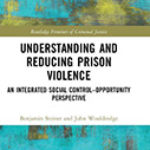Pills, Powder, And Smoke: Inside The Bloody War On Drugs

Author: Antony Loewenstein
Publisher: Melbourne; London: Scribe Publications, 2020, 360p.
Reviewer: Kendra McSweeney | September 2021
When this book was first released, it generated buzz for referencing the possibility of fair-trade cocaine. “Woke coke”! declared the Sunday Times. But that early press missed the more radical premise of journalist Antony Loewenstein’s book: that the only solution to the “bloody war on drugs” is across-the-board regulation and legalization. That’s all drugs, everywhere.
Long considered heretical, this basic argument is steadily gaining traction, often in surprising places. Riding the expansion of legalized recreational cannabis (in Uruguay, Canada, Mexico, and evermore U.S. states), the state of Oregon decriminalized the possession of hard drugs last year, as Portugal did back in 2001 (with much-heralded success). Meanwhile, a Harvard professor is challenging drug policy orthodoxy with responsible heroin use. And a popular bill now winding its way through the Colombian congress would legalize that country’s massive cocaine industry.
In this context, Loewenstein’s book is timely, because it reminds us of why these reforms, however modest, are urgently needed and long overdue. “[The drug war is] a conflict that’s never-ending and completely global, so I aim to reveal what this means for the millions of civilians caught in the middle of it. Capturing the scale of the war—its rhetorical justifications, militarization, faux arguments, and yet brutal outcomes—is what this book hopes to achieve” (14). To pull this off, Loewenstein marshals three strategies. One is to inspire our empathy for those with substance use disorders, thus pushing back on their all-too-persistent social stigmatization and to better frame the need for health policies, rather than policing, to better address their needs. Two, he stokes our outrage with infuriating examples of drug war over-reach and its myriad collateral damages, especially in out-of-the-way places that readers might otherwise think are untouched by the problems of drug production or consumption. As Loewenstein says: “This book is full of horror stories from across the globe, about how the darkest fantasies of prohibitionists have turned the world into a charnel house” (301). Third, he sketches out the contours of an alternate universe, with people-centered policies for drug use and drug trade.
These strategies are deployed to varying degrees across the chapters. First up is Honduras, a country whose geography makes it an ideal trampoline from which Colombian cocaine springboards to the rest of the world. The associated narco-corruption is legendary. But Honduras is one of Washington’s key counternarcotic partners, and so while top officials and elites in Honduras reap riches from U.S. military aid and foreign development assistance, the counternarcotic project inevitably targets the poor who stand in the way of elite designs on land and resources. Accordingly, Loewenstein visits with persecuted peasants and some of the indigenous victims of a disastrous 2012 raid by the Drug Enforcement Agency (DEA).
Chapter Three features another country wracked by the dynamics of cocaine transit, Guinea Bissau. There, as across West Africa, the presence of cocaine trafficking makes possible more pernicious DEA meddling to pursue ‘narco-terrorists,’ as authorized under the 2006 U.S. Patriot Act. Loewenstein’s exploration of the DEA’s little-known extraterritorial powers to detain and arrest is chilling, and arguably the best chapter in the book. Philippine President Dutarte’s barbaric war against perceived “drug addicts”—mainly users of methamphetamine known as shabu—is the focus of Chapter Four. Loewenstein shifts from chronicling the gruesome extrajudicial killings with a visit to a treatment and rehabilitation center, where residents insist they’ve turned a corner. The next three chapters review the appallingly racist and classist origins and legacies of the drug war in the U.S., Britain, and Australia. We meet a Maryland family crushed by the for-profit prison system; an abuse survivor and drug-using mother in Newcastle; a homeless heroin user in London; and a vet saved by marijuana in Australia. These accounts are leavened by interviews with inspirational reformers and visits to sites of hope, like the safe injection sites in Sydney.
Loewenstein is a high-energy guide through this grim terrain. He is at his best, however, when he tempers his ‘round-the-world’ rush with lucid analysis of the bureaucratic regime that is so deeply invested in maintaining the status quo. In the U.S. case, this means attending to the political machinations that allow the drug ‘threat’ to be an ever-present stimulant for Congressional spending, and the cynical law-making that maintains the carceral system. Unfortunately, such passages are rare. Lowenstein seems more interested in a sort of pastiche-style journalism, where to supplement his peripatetic first-hand reporting he samples widely from the investigative work of his fellow journalists, and from media coverage and commentary on drug-relevant research and policymaking. The chapter Notes confirm that he is sparing in his consultation of the work of the many policymakers, academics, and non-profits who’ve been in the drug-policy-reform trenches for decades (I found an average of only two such sources per chapter).
This approach becomes particularly problematic in the two final chapters: ‘Solutions’ and ‘Conclusion.’ By this point in the book, a reader might expect to be rewarded with some compelling and well-charted paths out of the drug war quagmire. After all, there is no shortage of roadmaps out there, and there are many that well deserve the sort of public platform that this book could provide. For example, Lowenstein might have offered a deep dive into Portugal’s two-decade old decriminalization regime, or perhaps investigated how state coffers are benefiting from marijuana legalization. Or he might have trenchantly analyzed the creative, pragmatic, and highly detailed prescriptions for drug regulation and legalization coming out of the UK’s Transform Drug Policy Foundation. Instead, he only gestures briefly to each, with no close scrutiny of any.
It is almost as if Loewenstein doesn’t trust that these small-scale salvos will ever be sufficient in taking down the expansive, hydra-like drug war. Rather than thinking through how to strategically scale them up, however, he offers some free-flowing ideas that appear oddly idealistic and alarmingly ahistorical. In ‘Solutions’, for example, he ponders, “[w]hat a legal and regulated drug market would look like is one of the great questions of our age, because no country has ever tried it” (294). Well, how about ongoing alcohol regulation following the U.S. government’s disastrous 13-year experiment with prohibition? Apparently unaware of this history, Loewenstein insists that “[a] minority of people abuse alcohol chronically, but making it illegal is unthinkable” (298). This is a missed opportunity to draw instructive lessons by comparing Prohibition and the drug war, as Lisa McGirr does so expertly in her 2015 book, The War on Alcohol: Prohibition and the Rise of the American State.
So while his book repeatedly asserts that drug regulation/legalization is necessary, Loewenstein—a self-described investigative journalist—seems uninterested in wrangling with the nuts and bolts of how to get there. Instead, the book’s overwhelming message is that the war on drugs is a bloody mess. Few would disagree. But how much more evidence do we need? How many more bleeding bodies need to be photographed, family plots visited, or mourning mothers interviewed? Even as Loewenstein pursues these very activities, he himself seems to question the need for this unrelenting, even voyeuristic, documentation. Over a slain drug user in Manila, he “felt fascinated and sickened, wondering if I was a vulture for taking so many photos” (113). At the Washington DC gravesite of a woman who died en route to visit her incarcerated father, he says “I felt like I shouldn’t have been around during such an intimate reunion” (173). Talking to the Honduran mother of a DEA-murdered boy was “one of the most difficult interviews I’ve ever done” (47). No doubt. And surely (re)traumatizing for her, too.
Ultimately, Pills, Powder and Smoke is a lot like its title: a collection of quick hits, breathless travelogue, and cursory analysis –much more journalistic smoke than investigative fire.
Kendra McSweeney, Department of Geography, Ohio State University


